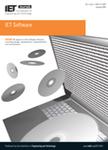版权所有:内蒙古大学图书馆 技术提供:维普资讯• 智图
内蒙古自治区呼和浩特市赛罕区大学西街235号 邮编: 010021

作者机构:Indian Inst Technol BHU Dept Comp Sci & Engn Varanasi Uttar Pradesh India
出 版 物:《IET SOFTWARE》 (IET软件)
年 卷 期:2020年第14卷第7期
页 面:768-782页
核心收录:
学科分类:0808[工学-电气工程] 08[工学] 0835[工学-软件工程]
基 金:The authors would like to thanks IIT-BHU India for providing such a vital research platform for students’ researchers and faculties. We also want to thank faculty members and students of the CSE department in IIT-BHU for their valuable comments and motivation
主 题:sampling methods learning (artificial intelligence) program testing principal component analysis software quality F K Mathews correlation coefficient sampling method synthetic minority oversampling technique NASA projects high-quality software system software testing kernel-based extreme learning machine high receiver operating characteristic curve ELM-based SDP overfitting problem classical SDP models K-PCA kernel principal component analysis kernel function PROMISE repository datasets class imbalance problem software defect prediction public datasets
摘 要:Predicting defects during software testing reduces an enormous amount of testing effort and help to deliver a high-quality software system. Owing to the skewed distribution of public datasets, software defect prediction (SDP) suffers from the class imbalance problem, which leads to unsatisfactory results. Overfitting is also one of the biggest challenges for SDP. In this study, the authors performed an empirical study of these two problems and investigated their probable solution. They have conducted 4840 experiments over five different classifiers using eight NASA projects and 14 PROMISE repository datasets. They suggested and investigated the varying kernel function of an extreme learning machine (ELM) along with kernel principal component analysis (K-PCA) and found better results compared with other classical SDP models. They used the synthetic minority oversampling technique as a sampling method to address class imbalance problems and k-fold cross-validation to avoid the overfitting problem. They found ELM-based SDP has a high receiver operating characteristic curve over 11 out of 22 datasets. The proposed model has higher precision and F-score values over ten and nine, respectively, compared with other state-of-the-art models. The Mathews correlation coefficient (MCC) of 17 datasets of the proposed model surpasses other classical models MCC.